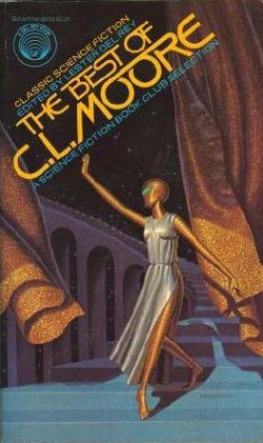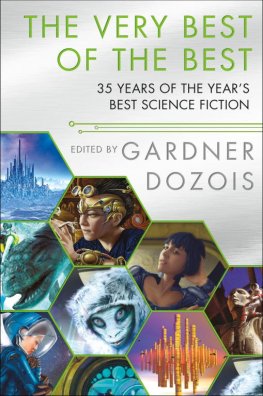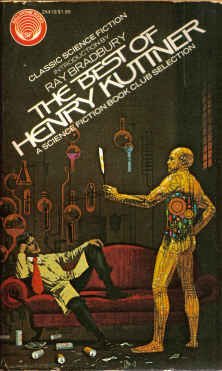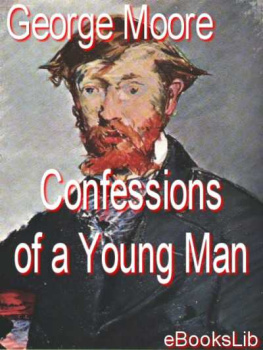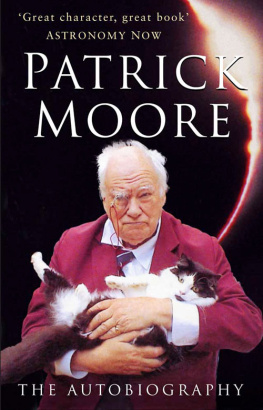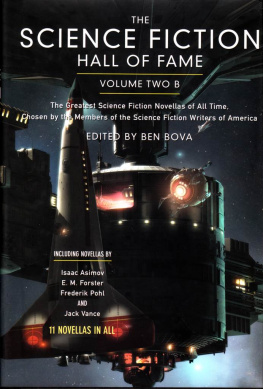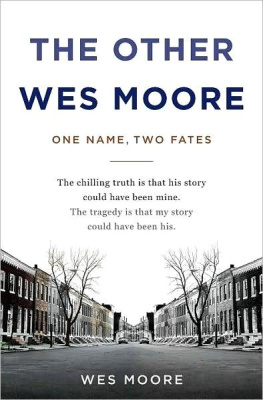Catherine L Moore - The Best of C. L. Moore
Here you can read online Catherine L Moore - The Best of C. L. Moore full text of the book (entire story) in english for free. Download pdf and epub, get meaning, cover and reviews about this ebook. year: 1976, publisher: Ballantine Books, genre: Art. Description of the work, (preface) as well as reviews are available. Best literature library LitArk.com created for fans of good reading and offers a wide selection of genres:
Romance novel
Science fiction
Adventure
Detective
Science
History
Home and family
Prose
Art
Politics
Computer
Non-fiction
Religion
Business
Children
Humor
Choose a favorite category and find really read worthwhile books. Enjoy immersion in the world of imagination, feel the emotions of the characters or learn something new for yourself, make an fascinating discovery.
- Book:The Best of C. L. Moore
- Author:
- Publisher:Ballantine Books
- Genre:
- Year:1976
- Rating:4 / 5
- Favourites:Add to favourites
- Your mark:
- 80
- 1
- 2
- 3
- 4
- 5
The Best of C. L. Moore: summary, description and annotation
We offer to read an annotation, description, summary or preface (depends on what the author of the book "The Best of C. L. Moore" wrote himself). If you haven't found the necessary information about the book — write in the comments, we will try to find it.
The Best of C. L. Moore — read online for free the complete book (whole text) full work
Below is the text of the book, divided by pages. System saving the place of the last page read, allows you to conveniently read the book "The Best of C. L. Moore" online for free, without having to search again every time where you left off. Put a bookmark, and you can go to the page where you finished reading at any time.
Font size:
Interval:
Bookmark:
Forty Years of C. L. Moore
Edited by Lester Del Rey
Back in the fall of 1933, I opened the November issue of Weird Tales to find a story with the provocative but meaningless title, Shambleau, by an unknown writer named C. L. Mooreand life was never quite the same afterward. Up to that time, science-fiction readers had accepted the mechanistic and unemotional stories of other worlds and future times without question. After the publication of Moores story, however, the bleakness of such writing would never again be satisfactory.
Almost forty years later, I sat in the audience at a World Science Fiction Convention banquet, listening to Forrest J. Ackerman announce a special award that was about to be presented to a writer. As is customary, Ackerman was saving the name of the recipient for the climax. But he mentioned a story called Shambleau and never got to finish his speech. As one, the 2,000 people in the audience came instantly to their feet in unanimous tributeclapping, shouting, and craning to see a gracious and lovely lady blushingly accept the applause.
Many in that audience had never read the story. But everyone knew about it. And everyone knew that Catherine Moore was one of the finest writers of all time in the field of science fiction.
It is probably impossible to explain to modem readers how great an impact that first C. L. Moore story had. Science fiction has learned a great deal from her many examples. But if you could go back to the old science-fiction magazines of the time and read a few issues, and then turn to Shambleau for the first time, you might begin to understand. The influences of that story were and are tremendous.
Here, for the first time in the field, we find mood, feeling, and color. Here is an alien who is truly alienfar different from the crude monsters and slightly-altered humans found in other stories. Here are rounded and well-developed characters. Northwest Smith, for in
stance, is neither a good guy nor a bad guyhe may be slightly larger than life, but he displays all aspects of humanity. In Shambleau we also experience as never before both the horror at what we may find in space and the romance of space itself. Andcertainly for the first time that I can remember in the fieldthis story presents the sexual drive of humanity in some of its complexity.
Black Thirst was Moores next story, and it continued the exploits of Northwest Smith. In this story, something new was brought to our tales of the far planets: a quality of beauty as a thing a man must strive for, even when it is perverted to wrong ends. There were other stories of Northwest Smith, but these first two stand out as the most moving and original.
Many of Moores early stories appeared in Weird Tales, though they were basically science fiction. Apparently, some of the editors of the sf magazines of the day were afraid of such extreme deviation from the more standard stories. But in October, 1934, Astounding Stories published her Bright Illusion. Now in those days, as countless letters to the editor indicated, the one thing readers of the science-fiction magazines did not want was a love story. Yet here was a tale of the pure quintessence of love that transcended all limits! Nevertheless, the readers raved about it arid clamored for more.
A few years ago, Larry Janifer was putting together an anthology of the favorite stories of a number of leading writers in the field. I sent him three titles, including Bright Illusion. He wrote back to say that hed never read it before, that he was deeply grateful to me for suggesting it, and that it was an absolute must for the book. Somehow, in spite of advances and changes in our writing, the stories of C. L. Moore remain as fresh and powerful now as they were back when the field was groping through its beginnings.
Meanwhile, in Weird Tales, Moore was beginning a new series of stories about Jirel, the warrior maid of the mythical kingdom of Joiry. In those days, the sf magazines were all intensely male oriented. Most of the readers were male, and the idea of sexual equality had never been consideredcertainly not for the protagonist of an adventure story. For such fiction, it followed axiomatically, one used a male hero. But in Black Gods Kiss the intensely feminine Jirel was a woman equal in battle to any swashbuckling male hero who ever ruled over the knights of ancient valor.
Jirel of Joiry was no imperturbable battler, however. She loved and hated, feared desperately to the core of her superstitious heartand yet dared to take risks that no man had ever faced. Every male reader loved the story, forgot his chauvinism, and demanded more stories
about Jirel. More were quickly forthcoming, though to my mind, the first one remained marginally the best and most original. Black Gods Kiss was simply too good to be surpassed in later episodes of the series.
Tryst in Time was another love story that greatly pleased the readers of Astounding Stories. Once again Moore captured the ultimate sense of romance that could be accepted only in a world of fantasy. Here was a love that swept through timeroving among the ages and building slowly to a climax of full realization. Yet Tryst in Time was more than a love storyit was also an exposition of both the fallibility and the glory of man.
During these early years, C. L. Moore had been a fairly prolific writer of stories which dealt almost exclusively with the most emotional elements of fiction. But after 1938, changes came about that may or may not have been caused by a change in her personal life. Her biographers disagree, and she makes few comments that provide us with any real answer. My own suspicion is that the changes occurred because of greater maturity on the part of the writer. Certainly, however, the alteration of her fictional interests coincide with a major event in her life.
When her first story was published, she was just twenty-two years old and was employed as a secretary in a bank in Indianapolis. By all accounts, she was a lovely and very popular young lady. But there had been many years of ill health before, during which she had turned to fiction as an escape. She says that she had been writing for fifteen years before submitting anything for publication. That would explain the escapist nature of her early fiction, though hardly the vigor of the stories.
In 1938, Catherine Moore met Henry Kuttner, a young writer of great promise, who was then just becoming recognized. She gave up her job in Indianapolis and moved to New York, where she and Kuttner were married in 1940. From then until 1958, when Kuttner died of a heart attack, after becoming one of the leading writers of science fiction, her interests were strongly focused on writing as a way of life.
Kuttner and Moore were an unusual mating of talents. Her fiction was noted for its sensitivity and emotional coloration. His was essentially intellectual in its creation, based upon a firm understanding of plot structure and, initially, often more clever than moving in its developments. Somehow, the couple managed to merge their talents, so that a story by either one would display both an intellectual base and a richly colored background.
They often worked together upon a single story; indeed, few stories produced during their marriage seem to be the work of either one alone. They used a great number of pseudonyms, some of which they seemed to share or exchange. And generally, the authorship of many of the stories is something of a puzzle, even today. A tale credited to Kuttner in one compilers list may be ascribed to Moore in another list. Internal evidence isnt always much help, either. Im told that the novel Fury was written by Kuttner, based upon a novelette entitled Clash by Night, by Moore; yet of the two, the novel seems to have more of the richness of emotional tone one might expect from Moore.
Next pageFont size:
Interval:
Bookmark:
Similar books «The Best of C. L. Moore»
Look at similar books to The Best of C. L. Moore. We have selected literature similar in name and meaning in the hope of providing readers with more options to find new, interesting, not yet read works.
Discussion, reviews of the book The Best of C. L. Moore and just readers' own opinions. Leave your comments, write what you think about the work, its meaning or the main characters. Specify what exactly you liked and what you didn't like, and why you think so.

